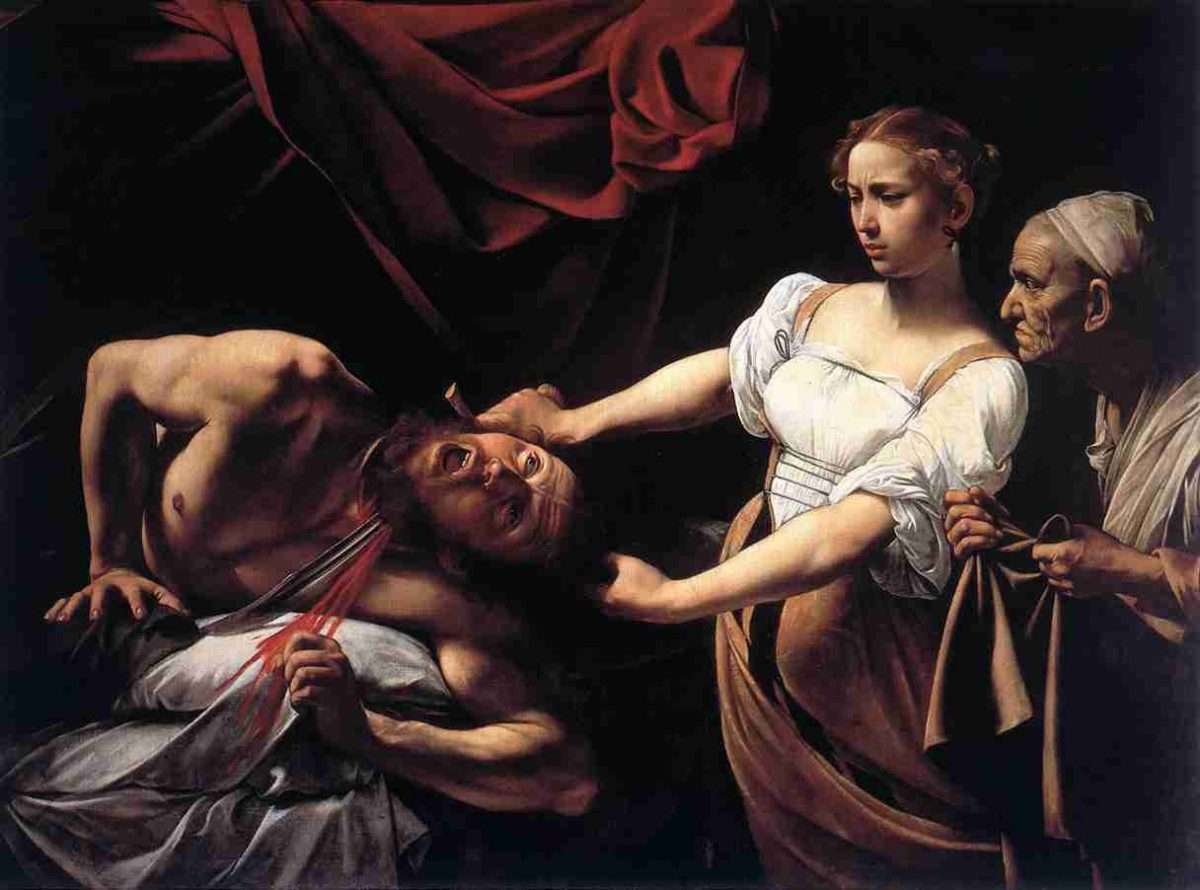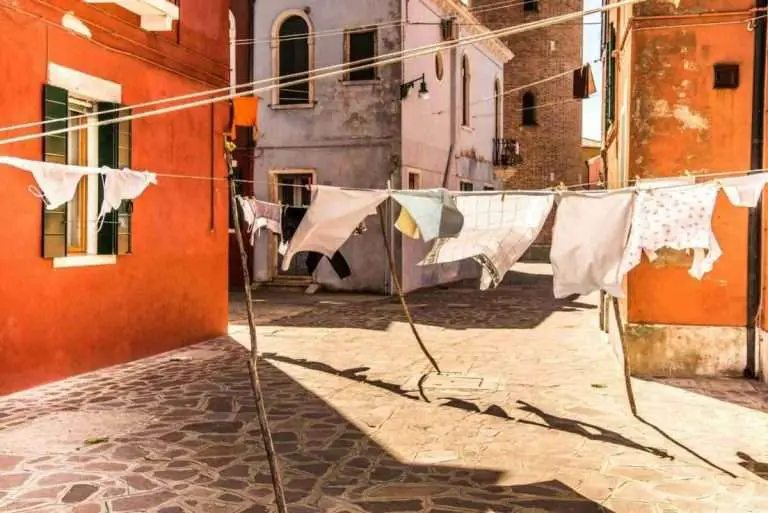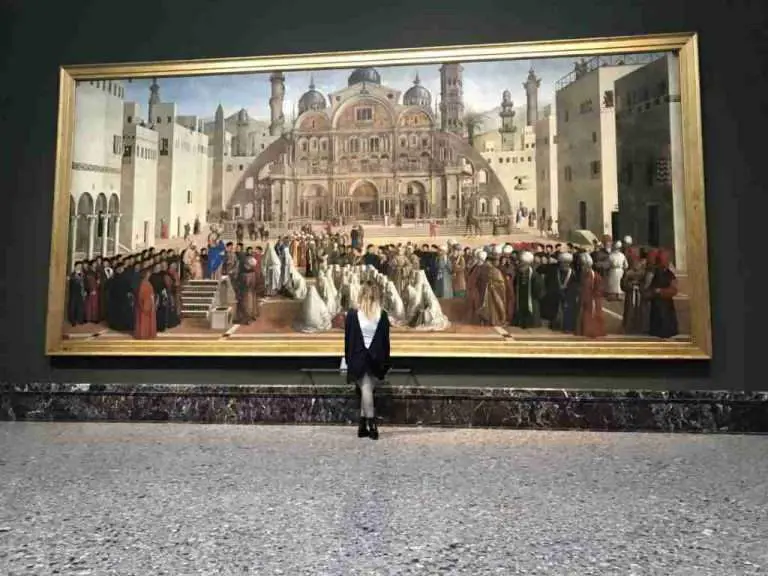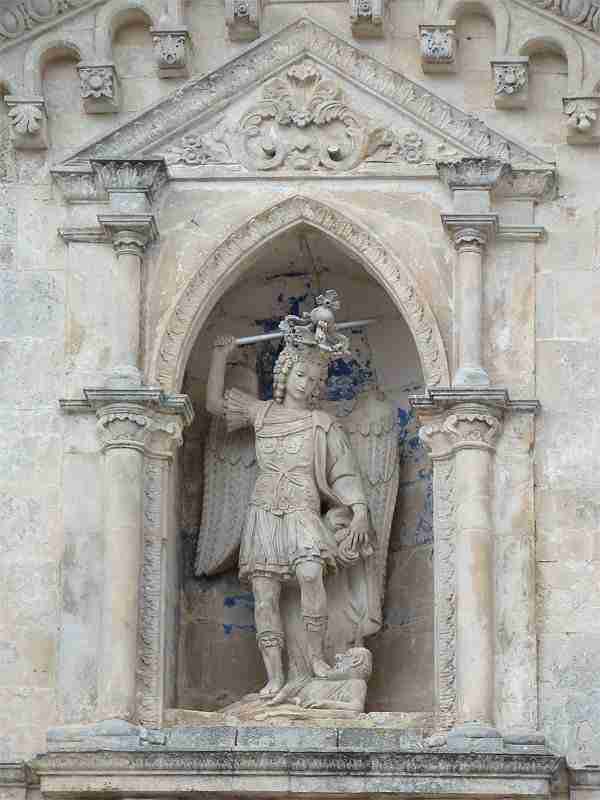Caravaggio Guide to Rome

There are few artists in history who inspire intrigue quite like Caravaggio. The mysterious, misunderstood, and occasionally murderous Caravaggio lived most of his working life in Rome. Many of his revolutionary paintings are still here.
The Life of Caravaggio: A Short Biography
Michelangelo Merisi, the man who would become the famed but troubled artist Caravaggio, was born on 29 September 1571 in Caravaggio, a small Lombard town in the province of Bergamo.
At the age of 13, Caravaggio began an apprenticeship in painting under Simone Peterzano in Milan. In the ensuing years, Caravaggio honed his artistic technique. But, being a teenager, he was also lured by the violent street life of the big city. In 1592, Caravaggio fled to Rome to escape accusations of murder. This was the first of two murder accusations to be levied against him over the course of his short life. He also went to Rome to find his fortune.
“They all came to Rome,” explains Peter Robb, in his excellent biography of Caravaggio.
“If you were an artist—a painter, a sculptor, architect, stonemason—and you wanted to make the “big time,” there wasn’t, really, anywhere else to work.”
Caravaggio started out as a workshop painter and then began to get commissions that other artists had already passed on. By 1600, Caravaggio was the most famous painter in Rome and worked steadily for the next several years. Despite the money and fame, the artist was unable to shake his violent temper and propensity for getting into fights.
In 1606, Caravaggio fled Rome, again to escape charges of murder. The artist lived a life on the run, spending time in Naples, Malta, and Sicily. He died in Porto Ercole, Tuscany—probably of sepsis—on 18 July 1610.
Caravaggio’s Works in Rome
Michelangelo Merisi da Caravaggio spent 14 years of his life in Rome, where he became one of the most celebrated painters of the Baroque. Several of Caravaggio’s paintings still decorate the walls of the chapels where they were originally painted. Many other Caravaggio works hang in the city’s galleries.
Following is a list of the places in Rome where you can see 23 of Caravaggio’s masterpieces and lesser-known works.
San Luigi dei Francesi



Probably the most revered Caravaggio paintings in Rome are located in the church of San Luigi dei Francesi near Piazza Navona.
Caravaggio made a name for himself after completing two of the three paintings here in the Contarelli Chapel. After Caravaggio completed “The Calling of St. Matthew” and “The Martyrdom of St. Matthew” in 1600, he became the most sought-after artist in Rome. Per Peter Robb in his Caravaggio biography: “The Calling of St. Matthew” was “a scene from ordinary life, so ordinary and so purged of visual rhetoric and transcendental messages that it demanded attention.”
The artist completed the altarpiece “The Inspiration of St. Matthew” in 1602. His patron Cardinal del Monte rejected Caravaggio’s first effort, “St. Matthew and the Angel,” which was unfortunately destroyed in World War II.
All of Caravaggio’s paintings for the Contarelli Chapel rely heavily on dramatic chiaroscuro, a technique with which he continues to be associated.
San Luigi dei Francesi is the French National Church in Rome. Entrance to the church is free. However, it will cost you a few euros to activate the lights to view the paintings.

Galleria Borghese


Galleria Borghese owns a half-dozen Caravaggio paintings, thanks to its namesake Cardinal Scipione Borghese, one of the wealthiest and most avid art collectors of his time.
The Borghese collection ranges from one of Caravaggio’s earliest paintings to one of his last. “Boy with a Basket of Fruit” was painted in 1593 during the artist’s first year in Rome. “John the Baptist”—one of eight Caravaggios that depict the apostle as a young boy—is dated to 1610. (Four of Caravaggio’s eight John the Baptist paintings are located in Rome.)

Among the most celebrated Caravaggios in the Borghese Gallery are “Saint Jerome” and “David with the Head of Goliath.” Caravaggio painted both of these during his final years in Rome. For the latter image, Caravaggio painted his self-portrait on the face of Goliath. Caravaggio, writes Robb, “painted his own wanted poster, a reminder that anyone was invited to kill him and bring back his head for cash.”



A side note: Peter Robb’s 1998 biography of Caravaggio lists another Caravaggio work in the collection of the Galleria Borghese. The museum now claims that the Portrait of Paul V in its collection is a copy of Caravaggio’s original.
Galleria Nazionale d’Arte Antica
The collection of the Galleria Nazionale d’Arte Antica is divided among two palace museums in Rome: Palazzo Barberini (not far from the Trevi Fountain) and Palazzo Corsini in Trastevere.
Palazzo Barberini

“David” in the Galleria Borghese isn’t the only famous Caravaggio painting that depicts a beheading. And it wasn’t the first.
The artist painted “Judith Beheading Holofernes” some time between 1599 and 1602. The model for Judith was Fillide Melandroni, Caravaggio’s lover. Scholars believe that Caravaggio was able to depict the goriness of the beheading after having watched the public execution of Beatrice Cenci in 1599.
And here’s a curious sidenote. In 2014, a person rummaging around in an attic in Toulouse, France, found a painting of the same theme and style to the above. The so-called Lost Caravaggio was sold at auction in 2019. But the jury is still out on whether the Toulouse Caravaggio is authentic.
Palazzo Corsini


Palazzo Corsini, a lovely palace museum in Trastevere, has two Caravaggio paintings on display. One is a 1599 depiction of Narcissus, a myth from Ovid’s Metamorphoses. The other painting is of John the Baptist.
Pair a visit to Palazzo Corsini with the neighboring Villa Farnesina, home of Raphael’s Loggia of Cupid and Psyche and the Renaissance artist’s painting of Galatea.
Capitoline Museums


Rome’s municipal museum of ancient treasures, the Capitoline Museums or Musei Capitolini, has an easy-to-miss painting gallery (pinacoteca) on its top floor. Here you will find two Caravaggios: “The Fortune Teller” and “John the Baptist (With a Ram).”
Caravaggio painted several versions of the same subject, so both of these paintings have “twins” in other museums. Another version of the Fortune Teller is in Paris at the Louvre. While a slightly darker, more sinister version of this particular John the Baptist composition is only a few blocks away in Rome’s Galleria Doria Pamphilj.
Galleria Doria Pamphilj



Galleria Doria Pamphilj, tucked away on the Via del Corso, has a trove of sumptuous artwork, including three Caravaggio paintings.
“Penitent Magdalene,” one of Caravaggio’s earliest paintings of a religious subject, shows Mary Magdalene in contemporary clothing. The model for Magdalene and the Virgin Mary in “Rest on the Flight Into Egypt” may have been a local prostitute. The latter painting is also unusual, at least for Caravaggio, in its depiction of a landscape.
Finally, there’s another painting of John. The differences between the Doria Pamphilj “John the Baptist” and the one in the Capitoline are negligible to the untrained eye. But this one lies more in the shadows, a closed-lip smirk replacing a smile.
Santa Maria del Popolo


Santa Maria del Popolo, the church on the north side of Piazza del Popolo next to the Flaminian Gate, is home to two Caravaggio masterpieces in the Cerasi Chapel. Caravaggio was commissioned to paint these two chapel panels following the runaway success of his “Matthew” paintings in San Luigi dei Francesci.
The dramatic “Crucifixion of Saint Peter” shows the moment when men are hoisting Peter’s cross in order to crucify him upside down. Facing this panel on the other side of the chapel is “Conversion of Saint Paul on the Road to Damascus.”
Annibale Carracci, considered by some to be Caravaggio’s contemporary artistic rival, painted the central altarpiece in the Cerasi Chapel. Carracci is best known for his fresco cycle in the Villa Farnese (the French Embassy in Rome) and for “The Bean Eater,” a painting in Palazzo Colonna.
Church of Sant’Agostino

The church of Sant’Agostino is just around the corner from Piazza Navona, but it is often overlooked. That’s too bad, because it contains a very special Caravaggio.
“The Madonna dei Pellegrini” – also known as the Pilgrims’ Madonna or Madonna of Loreto – was ridiculed when it was first unveiled because it depicted a barefoot Mary in an encounter with common people. Today, art historians and common people alike admire this painting for its stark realism, particularly for the visibly dirty feet of the kneeling male pilgrim.
Vatican Museums

One of Caravaggio’s most recognizable works is “The Entombment of Christ,” a work now located in the Pinacoteca in the Vatican Museums. This remarkable composition, with the weighty, lifeless body of Christ at its center, seems to echo Michelangelo’s Pietà in St. Peter’s Basilica and Raphael’s “Deposition of Christ” in the Borghese Gallery.
Private Collections
There are two other places in Rome with genuine Caravaggios. But they are private collections that are rarely, if ever, open to the public.


The Casino dell’Aurora di Villa Ludovisi Boncompagni, also known as Villa Aurora, is the private home of a descendent of the Ludovisi Boncompagni family (whose former palace on Via Veneto now houses the U.S. Embassy). Caravaggio painted his sole fresco—Jupiter, Neptune, and Pluto—on the ceiling of the Villa Aurora. (Update: In April 2023, “following a bitter inheritance dispute, Rita Boncompagni Ludovisi was court-ordered to leave the historic property.”)
The noble Odescalchi family owns Caravaggio’s “Conversion of St. Paul.” This painting looks similar in technique and color to the artist’s depiction of the same theme in the church of Santa Maria del Popolo. I have not figured out how to visit the private Odescalchi collection. But I will update this post as soon as I do.
Book a Caravaggio Tour of Rome
Learn even more about Caravaggio’s life and art in Rome on a specialized guided tour.
- Caravaggio in Rome: Portrait of an Artist. Private 3-hour tour led by an art historian.
- Borghese Gallery Tour & Tickets: With Bernini, Caravaggio & Raphael. Learn about Caravaggio and other major artists that are featured in the Borghese Gallery.
Post first published on September 2, 2020







